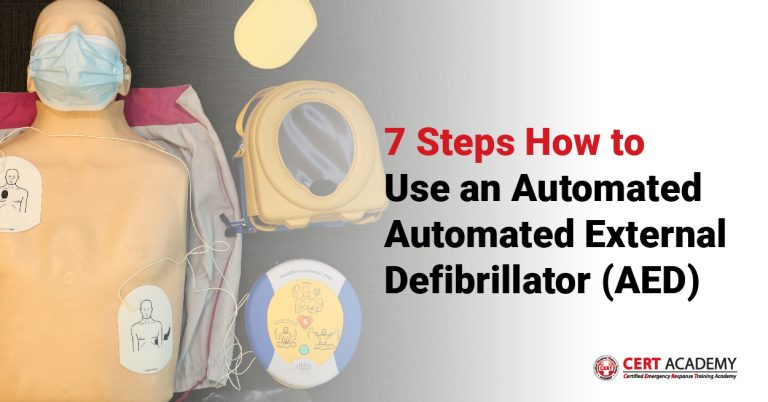Call Us +603-8066 8665
FEVER
Fever is a common medical condition characterized by an elevated body temperature, typically as a response to an underlying infection, illness, or other physiological triggers. It is one of the body’s natural defense mechanisms and is often accompanied by various symptoms, such as chills, sweating, fatigue, and muscle aches. While fever itself is not an illness, it is a sign that the body is fighting off an infection or reacting to some other internal disturbance.

Fever occurs when the body’s internal thermostat, known as the hypothalamus, is reset to a higher temperature in response to various stimuli, such as viral or bacterial infections, inflammatory processes, or even certain medications. This elevated body temperature helps the immune system function more efficiently, as many pathogens thrive best at normal body temperature.
In most cases, fever is a temporary and self-limiting condition, and it often resolves as the underlying cause is treated or the body successfully fights off the infection. However, it is essential to monitor and manage fever, especially in cases of high or persistent fever, as extreme temperatures can lead to complications and discomfort. Common methods of fever management include rest, hydration, over-the-counter fever-reducing medications (antipyretics), and, in severe cases, medical intervention.
Fever is a vital indicator of the body’s response to illness and serves as a helpful diagnostic tool for healthcare professionals when assessing a patient’s overall health. Understanding the underlying cause of a fever is crucial for appropriate treatment and management. So, we have three points of view based on Basic Life Support (BLS) Malaysia, BLS training Malaysia and BLS international.
From BLS in Malaysia, like in many other countries, primarily focuses on providing immediate care and support to individuals experiencing life-threatening emergencies, such as cardiac arrest, choking, or severe injuries. BLS protocols typically do not specifically address the management of fever, as fever is generally not considered a life-threatening emergency in itself. However, it’s essential to understand how to recognize and manage fever in the context of basic first aid and healthcare.
Here are some basic guidelines regarding fever management in Malaysia. Firstly, Recognizing Fever while performing basic life support, if you notice that the individual has a high body temperature, it is essential to recognize it as a sign of fever. Common signs of fever include a hot and flushed skin, sweating, shivering, and feeling warm to the touch.
Secondly, ensure safety which is ensure that the scene is safe for both the individual with fever and the first responder. This includes assessing for any potential dangers or hazards. Then, call for professional help If the person with a fever also displays signs of severe illness, such as difficulty breathing, confusion, severe headache, chest pain, or seizures, it is crucial to call for professional medical assistance immediately. In Malaysia, you can dial 999 for emergency services.
After that, we need to do temperature monitoring. If the person’s fever is mild and not accompanied by severe symptoms, it is essential to monitor their temperature regularly. You can do this by using a digital thermometer. Ensure that the thermometer is clean and follow the manufacturer’s instructions for use.
Next, about comfort measures while waiting for professional help or for the fever to subside naturally, you can take comfort measures to help the person feel better. These include keeping them in a comfortable and cool environment, encouraging them to stay hydrated by drinking fluids (e.g., water, clear soups), and using a damp cloth to cool their forehead.
The last one is medications. If the person has fever-reducing medications available (e.g., paracetamol or ibuprofen), and they are not allergic or contraindicated for such medications, you may consider offering them as per the recommended dosage. However, it’s essential to consult with a healthcare professional or follow local guidelines on over-the-counter medication usage.
Remember that while managing fever is important, it is not the primary focus of basic life support. The primary aim of BLS is to provide immediate care in life-threatening situations, such as cardiac arrest, choking, or severe injuries. For non-life-threatening conditions like fever, professional medical assessment and guidance should be sought when necessary.
There is side from BLS courses, which is BLS courses typically focus on providing essential life-saving skills in emergency situations, including cardiopulmonary resuscitation (CPR) and initial care for various medical conditions. While fever itself is not a primary topic in BLS courses, understanding how to respond to a person with a fever in an emergency context is important. Here’s how you might approach fever within the context of a BLS course in Malaysia.
First of all, we need to recognition. In a BLS course, participants should learn to recognize signs of illness and distress in a person. Fever can present with symptoms like a high body temperature, flushed skin, sweating, chills, and altered mental status. Recognizing these signs is essential to understanding that a person may require medical attention. Next, about ensure safety. As a BLS provider, your first priority is always the safety of the person in distress, yourself, and bystanders. Ensure the scene is safe and that there are no immediate threats.
Further, we need call for help. If a person with a fever is in distress, especially if they have accompanying severe symptoms or other underlying medical conditions, call for professional medical assistance (e.g., call 999 or the local emergency number in Malaysia) After that, assess the person or approach the person with a fever calmly and assess their responsiveness and breathing. If they are unresponsive and not breathing or breathing abnormally, begin BLS protocols, which include CPR and rescue breaths as needed.
Next point is, keeping the person to maintain hydration. If the person is conscious and alert but has a fever, encourage them to stay hydrated by drinking water or oral rehydration solutions if available. This is especially important in a hot and humid climate like Malaysia.
Then, we just need to reduce temperature. If appropriate and resources are available, you can assist the person in lowering their body temperature by using cooling techniques like placing cool, damp cloths on their forehead, neck, and underarms. However, be cautious not to cause hypothermia or discomfort.
In addition, monitor vital signs for the person. Continue to monitor the person’s vital signs, such as pulse and breathing rate, until professional medical help arrives. Be prepared to provide CPR or other BLS interventions if the person’s condition deteriorates.
`Lastly, we have to provide comfort. Offer reassurance and comfort to the person with the fever, keeping them calm and informed about the situation. Remember that BLS courses primarily focus on critical life-saving skills, and the treatment of fever falls under the purview of healthcare professionals. Your role as a BLS provider is to recognize when a person’s condition is deteriorating and to provide basic assistance until professional help arrives.
It’s essential to stay updated with the latest BLS guidelines and recommendations in Malaysia, as they may change over time. Additionally, consider taking more advanced first aid training or medical training if you want to expand your knowledge and skills in managing medical conditions like fever.
The last point of view are from BLS international side, BLS International guidelines primarily focus on providing immediate care to individuals experiencing cardiac arrest or life-threatening emergencies. While BLS guidelines do not specifically address fever management, it’s essential to recognize that fever itself is not typically a life-threatening condition. Fever is often a symptom of an underlying illness or infection, and its management falls within the scope of general healthcare rather than BLS.
If you encounter someone with a fever but no other life-threatening symptoms or conditions, you should prioritize their comfort and monitor them for any signs of deterioration. Here are some general guidelines for managing someone with a fever.
Firstly, monitor the person. Keep an eye on the individual’s condition and look for any signs of worsening. If they develop severe symptoms, such as difficulty breathing or altered mental status, call for emergency medical assistance.
After that, keep the person rest and hydration. Encourage the person to rest and drink plenty of fluids (e.g., water, clear broth, electrolyte drinks) to stay hydrated. Fever can lead to increased fluid loss through sweating and increased respiratory rate.
Then, over-the-counter medication for the person. If appropriate and per local guidelines, you may offer over-the-counter fever-reducing medications like acetaminophen (paracetamol) or ibuprofen to help lower the fever and alleviate discomfort. Always follow the dosing instructions on the medication label and consider any contraindications or allergies the person may have.
Next, we need temperature monitoring. If you have access to a thermometer, measure the person’s temperature regularly to track changes and ensure the fever is not becoming excessively high.
After that, we just do a cooling measures. You can use simple cooling techniques like applying a cool, damp cloth to the person’s forehead or encouraging them to take a lukewarm bath to help reduce their body temperature gradually.
The last one, seek medical advice. If the fever persists for more than a few days, is very high (above 104°F or 40°C), or if the person’s condition worsens, advise them to seek medical advice or consult a healthcare professional. It’s important to remember that BLS guidelines are primarily intended for the initial response to life-threatening situations, such as cardiac arrest or choking. When dealing with non-life-threatening conditions like fever, the focus should shift to general healthcare principles and medical advice. Always follow local healthcare protocols and guidelines when managing fevers or any other medical condition.
In conclusion, fever is a common physiological response to infections and other medical conditions. It is the body’s way of fighting off pathogens and maintaining homeostasis. While fever itself is generally not a cause for concern, it can be a symptom of underlying health issues that require medical attention. It is important to monitor fever, especially in children and the elderly, and seek medical advice if it persists or is accompanied by severe symptoms. Proper hydratiCRESon, rest, and over-the-counter fever-reducing medications can help alleviate discomfort associated with fever, but the underlying cause should always be addressed by a healthcare professional when necessary. Remember that fever is a natural defense mechanism that plays a crucial role in our immune system’s response to infections.



